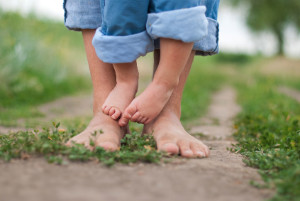
Foot health is important for everyone but because children’s feet are soft, pliable, and still developing, they are more vulnerable to injuries, diseases, and conditions that can interfere with normal movement. More common foot problems among children are Sever’s disease, flat feet, toes pointing in or out, ankle weakness, and foot deformities. Sever’s disease is heel pain in children that may come on during puberty or when experiencing growth spurts. This is usually a temporary affliction and can be managed by stopping sports or activities involving running or jumping until the pain subsides. Flat foot is when the entire sole of the child’s foot lies flat against the ground. If a child walks with their toes pointed in or out it may be because a child’s leg alignment is constantly changing and again may improve as the child grows and muscles get stronger. Children’s ankles may be weak and give way more easily during sports and everyday activities leading to chronic ankle instability. Children may even suffer from congenital foot deformities. It is important to consult with a podiatrist for help in learning and understanding the growth of children’s feet, proper footwear choices as they age, and to treat any foot problems that may arise and are not transitory.
Making sure that your children maintain good foot health is very important as they grow. If you have any questions, contact Howard Waxman, DPM of Pleasant Valley Podiatry. Our doctor can provide the care you need to keep you pain-free and on your feet.
Keeping Children's Feet Healthy
Having healthy feet during childhood can help prevent medical problems later in life, namely in the back and legs. As children grow, their feet require different types of care. Here are some things to consider...
Although babies do not walk yet, it is still very important to take care of their feet.
Avoid putting tight shoes or socks on his or her feet.
Allow the baby to stretch and kick his or her feet to feel comfortable.
As a toddler, kids are now on the move and begin to develop differently. At this age, toddlers are getting a feel for walking, so don’t be alarmed if your toddler is unsteady or ‘walks funny’.
As your child gets older, it is important to teach them how to take care of their feet.
Show them proper hygiene to prevent infections such as fungus.
Be watchful for any pain or injury.
Have all injuries checked by a doctor as soon as possible.
Comfortable, protective shoes should always be worn, especially at play.
If you have any questions please feel free to contact one of our offices located in Willoughby Hills and Broadview Heights, OH . We offer the newest diagnostic and treatment technologies for all your foot and ankle needs.
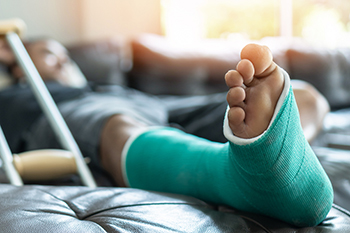
One of the most common injuries, a broken foot, is characterized by worsening pain, bruising, and swelling. It is usually accompanied by a loss of feeling, a limited range of movement, and difficulty in bearing weight. Two of the top causes of a broken foot are severe impact in car accidents and trauma from dropping something heavy on the foot. Another common way to break or fracture the foot, especially among athletes, is kicking a ball. Sudden impact combined with running speed can increase the risk. It is also quite common to break your foot from a fall, especially down stairs or onto a particularly rigid surface. Both sports injuries and falling can result in a twisted ankle, which can mask the fact that a bone also has broken. Taking a wrong step, such as off a curb or ladder, can result in foot fractures. Underlying conditions, like arthritis, may also contribute to the risk. Wearing shoes that lack proper stability and support, such as high heels, may cause a loss of balance or a fall that leads to a broken foot. Repetitive impact, common to runners and joggers, is a common cause of stress fractures in the feet. If you believe you have broken your foot, please seek immediate care from a podiatrist.
A broken foot requires immediate medical attention and treatment. If you need your feet checked, contact Howard Waxman, DPM from Pleasant Valley Podiatry. Our doctor can provide the care you need to keep you pain-free and on your feet.
Broken Foot Causes, Symptoms, and Treatment
A broken foot is caused by one of the bones in the foot typically breaking when bended, crushed, or stretched beyond its natural capabilities. Usually the location of the fracture indicates how the break occurred, whether it was through an object, fall, or any other type of injury.
Common Symptoms of Broken Feet:
Those that suspect they have a broken foot shoot seek urgent medical attention where a medical professional could diagnose the severity.
Treatment for broken bones varies depending on the cause, severity and location. Some will require the use of splints, casts or crutches while others could even involve surgery to repair the broken bones. Personal care includes the use of ice and keeping the foot stabilized and elevated.
If you have any questions please feel free to contact one of our offices located in Willoughby Hills and Broadview Heights, OH . We offer the newest diagnostic and treatment technologies for all your foot and ankle needs.
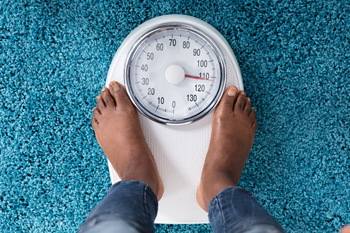
Obesity poses risks to your health, as well as extra pressure put on your feet. With each step you take, your feet must hold one and a half times your total body weight. Painful conditions such as heel spurs, plantar fasciitis, sprains, and fractures can be triggered by excess pounds. Diabetes and peripheral artery disease resulting from being overweight can also contribute to poor circulation and foot ulcers. Symptoms can become severe enough that amputation of a limb is possible. Maintaining a healthy diet and weight can help your general health and the health of your feet. An exercise plan will help in this endeavor. If your feet hurt badly, exercise is still possible with low impact regiments like water aerobics or swimming. It is suggested to consult with a podiatrist before you embark on any new exercise routine to make sure it is safe and will not make foot problems worse.
Obesity has become very problematic at this point in time and can have extremely negative effects on the feet. If you’re an obese individual and are concerned about your feet, contact Howard Waxman, DPM from Pleasant Valley Podiatry. Our doctor can provide the care you need to keep you pain-free and on your feet.
Obesity and Your Feet
Since your feet are what support your entire weight when standing, any additional weight can result in pain and swelling. Being overweight is one of the main contributors to foot complications.
Problems & Complications
Extra Weight – Even putting on just a few extra pounds could create serious complications for your feet. As your weight increases, your balance and body will shift, creating new stresses on your feet. This uneven weight distribution can cause pain, even while doing the simplest tasks, such as walking.
Diabetes – People who are overweight are at serious risk of developing type-2 diabetes, which has a drastic impact on the health of your feet. As you get older, your diabetes might worsen, which could lead to loss of feeling in your feet, sores, and bruises. You could also become more prone to various infections.
Plantar fasciitis – Pressure and stress that is placed on muscles, joints, and tendons can trigger plantar fasciitis, which is an inflammation of tissue that forms along the bottom of the foot.
If you have any questions please feel free to contact one of our offices located in Willoughby Hills and Broadview Heights, OH . We offer the newest diagnostic and treatment technologies for all your foot and ankle needs.
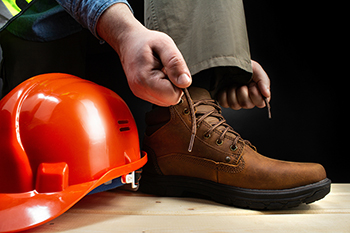
Research has shown the risk of falling among construction workers is greater than other professions. Many construction workers use tall ladders and climb on rooftops. There are prevention techniques that can be implemented that may help to reduce the risk of falling. These can include inspection of the work site on a daily basis, and proper clean up at the end of the day. Additionally, it is helpful for the employees to be aware of a fall protection program, and it is beneficial that the employer provides proper protective equipment. Many construction sites have guard rails in place that can help to prevent falling. Falling can affect the feet and ankles, and can hinder completing daily activities. If you would like additional information about how the feet can be harmed from falling, and to learn about proper prevention techniques, please consult with a podiatrist.
Preventing falls among the elderly is very important. If you are older and have fallen or fear that you are prone to falling, consult with Howard Waxman, DPM from Pleasant Valley Podiatry. Our doctor will assess your condition and provide you with quality advice and care.
Every 11 seconds, an elderly American is being treated in an emergency room for a fall related injury. Falls are the leading cause of head and hip injuries for those 65 and older. Due to decreases in strength, balance, senses, and lack of awareness, elderly persons are very susceptible to falling. Thankfully, there are a number of things older persons can do to prevent falls.
How to Prevent Falls
Some effective methods that older persons can do to prevent falls include:
Falling can be a traumatic and embarrassing experience for elderly persons; this can make them less willing to leave the house, and less willing to talk to someone about their fears of falling. Doing such things, however, will increase the likelihood of tripping or losing one’s balance. Knowing the causes of falling and how to prevent them is the best way to mitigate the risk of serious injury.
If you have any questions, please feel free to contact one of our offices located in Willoughby Hills and Broadview Heights, OH . We offer the newest diagnostic and treatment technologies for all your foot care needs.
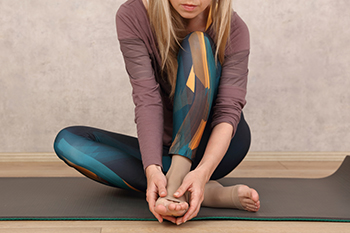
Circulatory problems in the legs and feet can occur simply from sitting or standing in the same position for a prolonged time or not moving your toes enough. Unfortunately, this can lead to blood clots or deep vein thrombosis – two possibly fatal conditions. Poor blood circulation can also result from thickened arteries caused by age, family history, diabetes, or high cholesterol. A healthy diet and regular exercise (including wiggling your toes and rotating your ankles daily) are the best things you can do to improve your chances of good blood flow to your lower extremities. Signs that you may be suffering from poor circulation can include numbness, tingling, pain in your feet, cold toes or fingers, and/or pale or blue-tinged skin. If you suspect you have poor circulation, speak to a podiatrist about solutions and treatment available.
While poor circulation itself isn’t a condition; it is a symptom of another underlying health condition you may have. If you have any concerns with poor circulation in your feet contact Howard Waxman, DPM of Pleasant Valley Podiatry. Our doctor will treat your foot and ankle needs.
Poor Circulation in the Feet
Peripheral artery disease (PAD) can potentially lead to poor circulation in the lower extremities. PAD is a condition that causes the blood vessels and arteries to narrow. In a linked condition called atherosclerosis, the arteries stiffen up due to a buildup of plaque in the arteries and blood vessels. These two conditions can cause a decrease in the amount of blood that flows to your extremities, therefore resulting in pain.
Symptoms
Some of the most common symptoms of poor circulation are:
Treatment for poor circulation often depends on the underlying condition that causes it. Methods for treatment may include insulin for diabetes, special exercise programs, surgery for varicose veins, or compression socks for swollen legs.
As always, see a podiatrist as he or she will assist in finding a regimen that suits you. A podiatrist can also prescribe you any needed medication.
If you have any questions, please feel free to contact one of our offices located in Willoughby Hills and Broadview Heights, OH . We offer the newest diagnostic and treatment technologies for all your foot care needs.